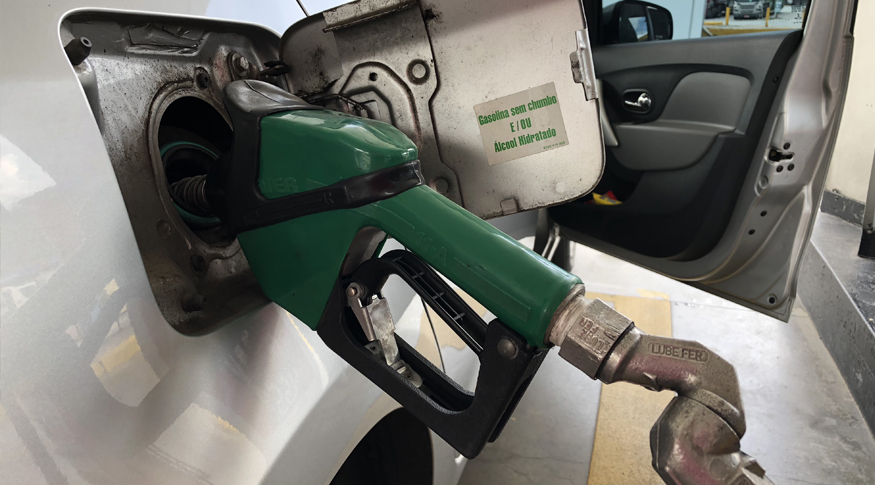IPCA-15
Inflation preview stays at 1.17%, highest index in November since 2002
November 25, 2021 09h00 AM | Last Updated: November 25, 2021 08h57 PM

The inflation preview is up 1.17%, biggest change in November since 2002, when the index reached 2.08%. The cumulative change in the year is of 9.57%, and in 12 months, of 10.73%, above the 10.34% of the 12 previous months. November 2020 had a rate of 0.81%. Data are from the Extended National Consumer Price Index - IPCA, released today (25) by the IBGE.
With the biggest individual impact on the month (0.40 p.p), gasoline recorded an increase of 6.62% and influenced the result of transportation which recorded, by far, the biggest change (2.89%) and main impact (0.61 0.p.) among the groups surveyed. Fuel has had a cumulative change of 44.83% in the year and of 48.00% in 12 months.
Another highlight was ride sharing apps (16.23%), which had grown 11.60% in October. On the other hand, airfares fell (-6.34%), after consecutive rises in September (28.76%) and October (34.35%).
Besides transportation, the other eight groups of products and services surveyed rose in November. In Housing (1.06%), the biggest contribution was that of bottled gas (4.34%), whose prices rose for the 18th month in a row, with a cumulative increase of 51.05% in the period that started in June 2020.
Electricity (0.93%) recorded a smaller change than in October (3.91%) and had a share of 0.05 p.p of the monthly index. The “water scarcity” tariff flag has been in effect since September, adding R$14.2 to the light bill per 100 kWh consumed. Also, electricity fares rose in Goiânia, Brasília and São Paulo.
In the group of Health and personal care, the hike of 0.80% was influenced by the items Personal hygiene (1.65%) and pharmaceuticals (1.13%). In October, the former had recorded a negative change (-0.26%), and the latter was close to stability (0.02%). The three groups, altogether, accounted for 0.88 p.p. of the IPCA-15 in November, which is equivalent to 75% of the month’s index.
Food and beverages (0.40%) decelerated against October (1.38%), due to the less significant increases in the prices of tomato tomate (14.02%), chicken pieces (3.07%) and cheese (2.88%). Meat (-1.15%), long-life milk (-3.97%) and fruit (-1.92%) also recorded decreases. On the other hand, the prices of potato (14.13%) rose above those of October (8.57%). Onion recorded a positive change (7.00%) afer a decrease of 2.72% in the previous month.
A highlight in food away from home (0.15%), is the acceleration of meals (from 0.52% in October to 0.88% in November) and a decrease in the prices of snacks (-1.08%).
Wearing apparel (1.59%) recorded the second biggest change in the month, with increases in all the items surveyed, with a highlight to female wear (2.05%), male wear (1.88%), and children’s wear (1.30%), besides footwear and accessories (1.28%). In the year, the group had a cumulative change of 8.64%, whereas the cumulative index in the same period in 2020 was negative (-1.31%). The other groups of IPCA-15 stood between 0.01% of Education and 1.53% of Household articles.
IPCA-15 records increase in all the areas surveyed
The survey also shows that all the areas survyed recorded increases in November. Goiânia recorded the biggest change (1.86%), a result driven by electricity (10.93%) and by gasoline (5.87%). The lowest result was that of the metrropolitan area of Belém (0.76%), with fall of prices of electricity (-2.05%) and acai berry (-9.30%).
More about the survey
The National System of Consumer Price Indexes – SNIPC continuously and systematically produces consumer price indexes. Released on the Internet since May 2000, IPCA-15 differs from the IPCA in terms of the period of price collection, which is usually from day 16 of the previous month until day 15 of the reference month, and of geographic coverage.
Today, the target population of the IPCA-15 encompasses households with earnings between 1 and 40 minimum wages, whatever the source, living in the following metropolitan areas: Belém, Fortaleza, Recife, Salvador, Belo Horizonte, Rio de Janeiro, São Paulo, Curitiba, Porto Alegre, as well as the Federal District and the municipality of Goiânia. Please take a look at the complete results at Sidra.




















